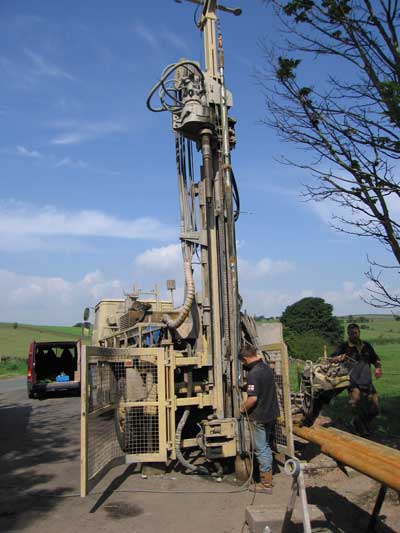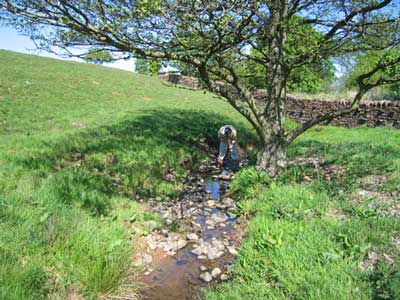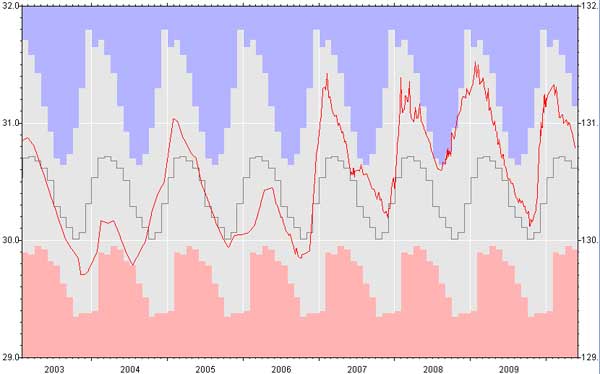People who live in north-west England are being affected by their first hosepipe ban in 14 years. A prolonged dry spell has led to unusually low water levels in rivers and reservoirs, but BGS data shows that groundwater levels in the deeper aquifers in the region are currently in the normal range.

BGS hydrogeologists regularly monitor water quality from boreholes and rivers. BGS © UKRI.
BGS holds over one million measurements of groundwater levels in our groundwater level information. Some wells have been monitored for over 100 years, enabling us to look at very long term changes. Data from a 90 m-deep borehole at Skirwith (near Kirkby Lonsdale) shows that groundwater levels in some parts of the Permo–Triassic Sandstone that underlie the north-west are around average for July, based on data collected since 1978.
Groundwater supplies
Groundwater provides about 15 per cent of public water supply in north-west England and is particularly valuable during times of surface water shortages.
BGS has an active research project in north-west England. We are studying interactions between groundwater and surface water in the Eden Valley, looking particularly at how land use can affect water quality. Our monitoring indicates that groundwater levels in small upland sub-catchments (with less groundwater storage capacity) have fallen in response to the lack of rainfall. Our hydrogeologists regularly monitor water quality from wells, boreholes, springs, and streams.

BGS staff will perform an additional sampling round in July 2010 to observe what impacts the dry spell has had on water quality. BGS © UKRI.
The current drought provides a rare opportunity to study an extreme event and we will be undertaking additional sampling during the summer to observe what impacts the dry spell has had on water quality. We expect to see increased concentrations of contaminants such as nitrate due to reduced dilution.
Sandstone aquifers hold large water reserves
Groundwater supplies are mainly replenished during autumn and winter, and are not so affected by periods of unusually low summer rainfall as surface waters.
Major aquifers (rocks with large groundwater stores) such as the Permo-Triassic Sandstones of north-west England are buffered against periods of low rainfall because of their ability to store vast volumes of water.

Hydrograph of Skirwith borehole, showing observed groundwater levels against long term minima, mean and maxima. Relatively high winter levels over the last four winters have buffered the effects of this summer’s drought. BGS © UKRI.
Groundwater contributes about 30 per cent of public water supply over England and Wales, and over 80 per cent in south-east England. Groundwater is also of great importance to private users, such as farmers, who abstract from their own wells and boreholes.
Contact
Please contact BGS Enquiries (enquiries@bgs.ac.uk) for more information.

